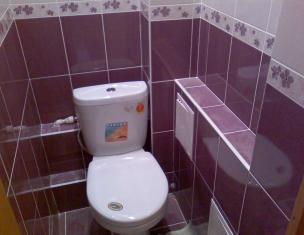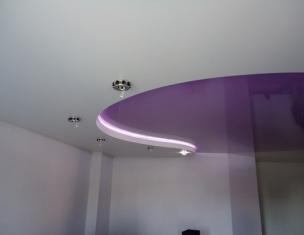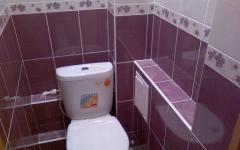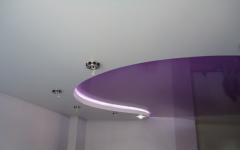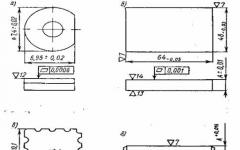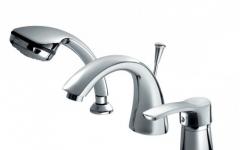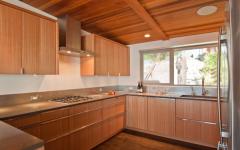Stretch ceilings are a good idea for decorating a ceiling.
These ceilings differ in excellent design, the increased durability, durability and safety.
Today, many manufacturers offer a wide range of these products.
Therefore, in our article, we will take a closer look at the pros and cons of stretch ceilings in the house in order to understand whether they suit you or not.
Stretch ceiling. Characteristics
The material for stretch ceilings is polyvinyl chloride, this is for a film ceiling. And for the fabric ceiling, polyester fabric is used. Each of the types has its own special indicators, disadvantages and advantages. Although, they still have common features.
Different types of stretch ceilings can be designed for certain conditions, so when buying a product, carefully read its characteristics.
Advantages of stretch ceilings
Along with other options, we highlight a number of advantages in favor of stretch ceilings:
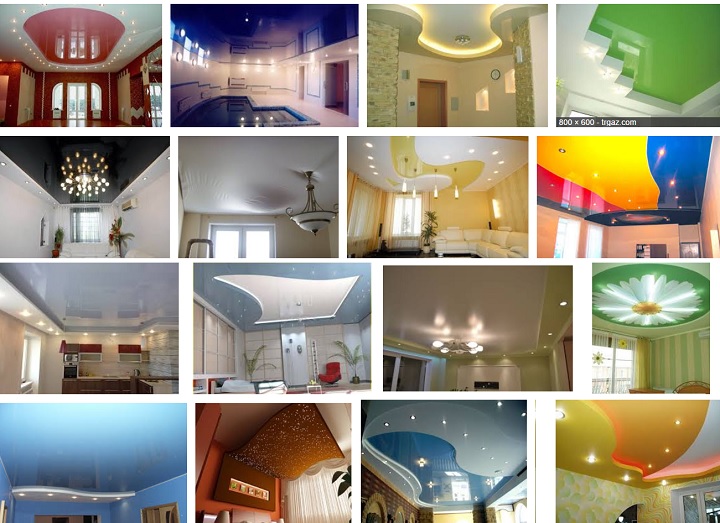
Disadvantages of stretch ceilings
 Describing the advantages of stretch ceilings, we can say about their disadvantages:
Describing the advantages of stretch ceilings, we can say about their disadvantages:
- Stretch ceilings reduce the height of the room by 5 cm with a single-level installation, and by 10 cm with a two-level one.
- Also, you will not be able to pull such a ceiling yourself. This work is best left to professionals.
Above, we described the general pros and cons of stretch ceilings in the house.
We will consider varieties of ceilings below.
Varieties of stretch ceilings
fabric
Fabric ceilings are products based on polyester and polyurethane fibers.
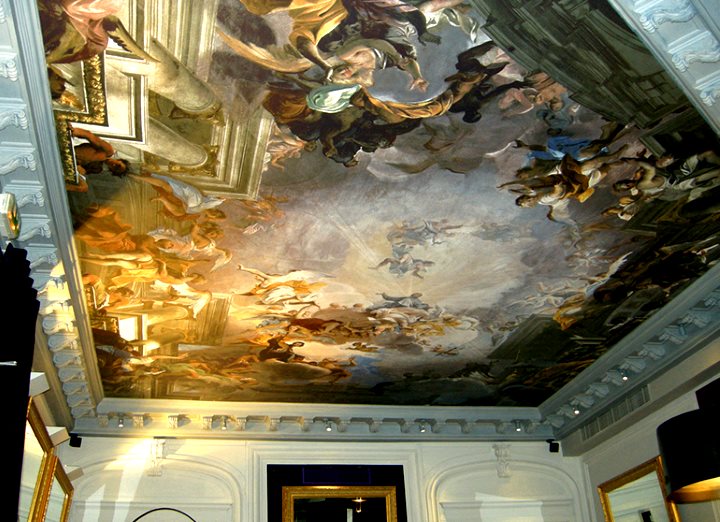 These ceilings are installed in nurseries, kitchens, loggias and other rooms.
These ceilings are installed in nurseries, kitchens, loggias and other rooms.
Such material is commonly called a seamless ceiling.
Since the canvas is produced in one tape, 515 mm wide, there are no restrictions on the length.
These sizes are quite enough even for a large room.
The advantages of fabric ceilings include:
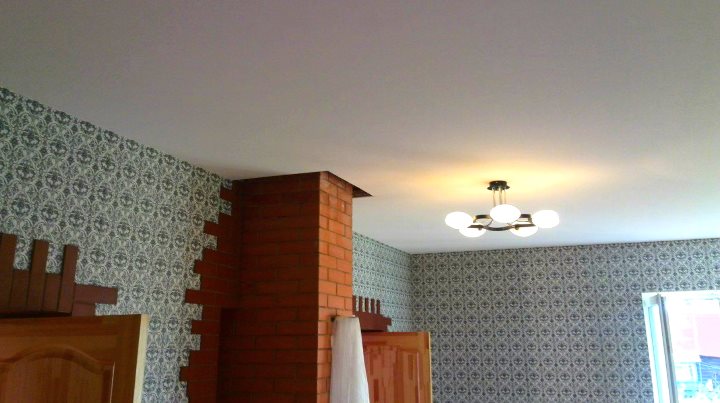
Summing up, we can say that the fabric stretch ceiling has high performance. Moreover, with proper care, the ceiling fabric will not crack and turn yellow. You can change the color of the fabric ceiling. Just repainted with acrylics.
The disadvantages include:
- matte non-mirror surface;
- the impossibility of reusing the canvas, since the fabric is cut end-to-end during installation.
Matte
Stretch ceilings are divided not only by the material of manufacture. They can also be subdivided by texture, i.e. they can be matte, satin and glossy.
Matte stretch ceilings are made from PVC film and based on polyester fabric. This manufacturing option is more common.
In its appearance, the matte stretch ceiling resembles a whitewashed or plastered ceiling. This canvas is perfect for an interior with antique furniture.
Matte stretch ceilings have the following advantages:
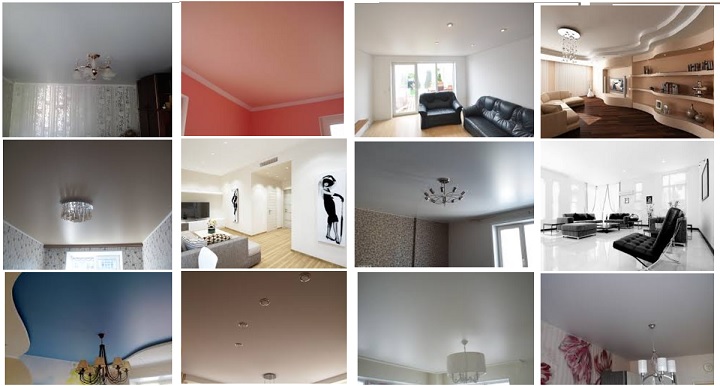
Matte stretch ceilings also have disadvantages.:
- a meager variety of design (as a rule, canvases are painted white or light shades are chosen);
- not suitable for rooms with low ceilings;
- not suitable for installation in the kitchen, as stain removal from rough material is difficult.
Glossy
Glossy stretch ceilings are only PVC sheets, they are also called varnish coatings. These ceilings are a mirror smooth surface.

Glossy stretch ceiling has advantages:
- increased reflection coefficient, due to which the space of the room visually increases in height. Such a ceiling is especially relevant for;
- a wide range of colors, so you can choose any color you like;
- due to increased moisture resistance, it is possible to install in kitchens and bathrooms;
- multiple installation of canvases due to special fastening.
Disadvantages of glossy stretch ceilings:
- high glare ability, due to which the ceilings will become the center of attention in the room;
- glossy canvases depend on the temperature regime, sometimes it may occur;
- for wide rooms, it will be necessary to weld two glossy canvases, and with dark tones of the ceiling, the seam will be very noticeable;
- installation takes place using specialized equipment;
- cannot be used in a room, as they emit a large amount of heat during operation, and this is harmful for PVC films.
At negative temperatures, glossy stretch ceilings cannot be used!
Satin
Satin stretch ceilings have a beautiful appearance. They have a velvety surface of a uniform texture.
Satin stretch ceilings pluses:
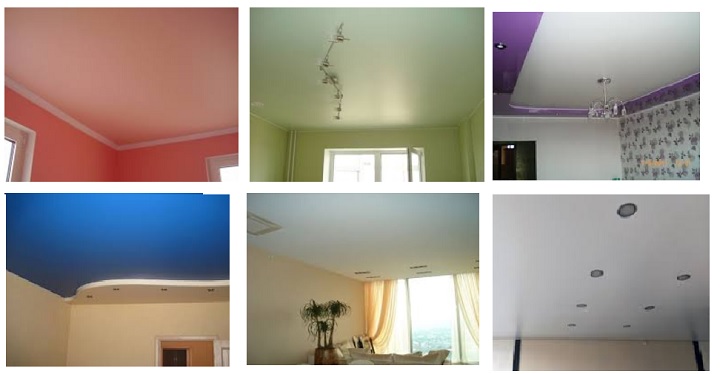
Satin stretch ceiling cons:
- limited color range, only light and bed shades;
- due to high humidity in the bathroom, the satin stretch ceiling cannot be installed.
In terms of their properties and characteristics, all types of stretch fabrics are almost the same. With proper use, their service life can reach 20-25 years.
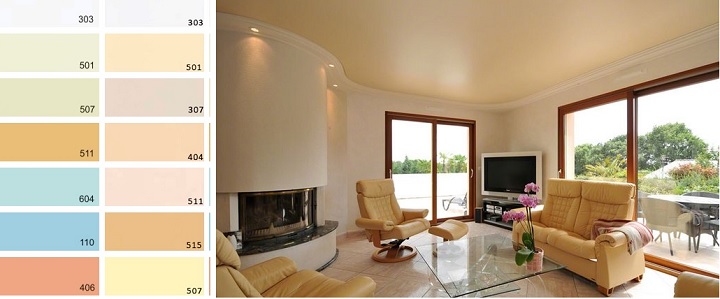
Which stretch ceiling to choose depends on you and your needs.
We hope that our article helped you understand the types of stretch ceilings. Good luck in choosing and buying!



